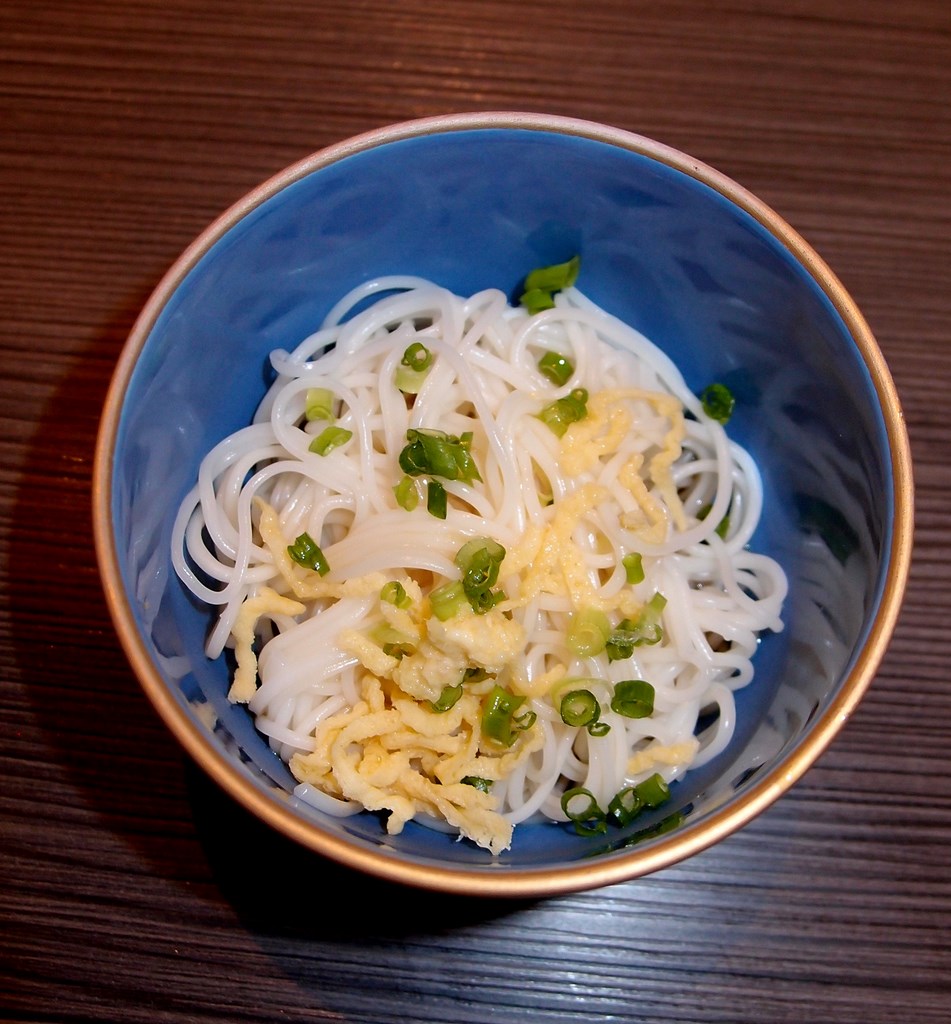PATES SOBA
Les soba (蕎麦 / そば) sont avec les udon et les ramen, les pâtes les plus consommées au Japon.
On les prépare avec de la farine de sarrasin mélangée à de l'eau, que l'on étale sur une plaque et qu'on tranche en fines lamelles d'environ 1 à 2 mm de largeur. On les plonge ensuite dans de l'eau bouillante, comme on le fait pour les pâtes européennes. Elles sont généralement consommées soit dans un bol rempli de mentsuyu chaud (sorte de bouillon), soit rincées à l'eau froide.
-------------------------------------------
Soba (そば or 蕎麦) is the Japanese name for buckwheat. It is synonymous with a type of thin noodle made from buckwheat flour, and in Japan can refer to any thin noodle (unlike thick wheat noodles, known as udon). Soba noodles are served either chilled with a dipping sauce, or in hot broth as a noodle soup. It takes three months for buckwheat to be ready for harvest, so it can be harvested four times a year, mainly in spring, summer, and autumn. In Japan, buckwheat is produced mainly in Hokkaido. Soba that is made with newly harvested buckwheat is called "shin-soba". It is sweeter and more flavorful than regular soba.
In Japan, soba noodles are served in a variety of settings: they are a popular inexpensive fast food at railway stations throughout Japan, but are also served by expensive specialty restaurants. Markets sell dried noodles and men-tsuyu, or instant noodle broth, to make home preparation easy.
Some establishments, especially cheaper and more casual ones, may serve both soba and udon as they are often served in a similar manner. Soba is the traditional noodle of choice for Tokyoites. This tradition originates from the Tokugawa period, when the population of Edo (Tokyo), being considerably wealthier than the rural poor, were more susceptible to beri beri due to their high consumption of white rice, which is low in thiamine. It was discovered that beri beri could be prevented by regularly eating thiamine-rich soba. In the Tokugawa era, every neighborhood had one or two soba establishments, many also serving sake, which functioned much like modern cafes where locals would stop for a casual meal.
-------------------------------------------
Soba (そば or 蕎麦) is the Japanese name for buckwheat. It is synonymous with a type of thin noodle made from buckwheat flour, and in Japan can refer to any thin noodle (unlike thick wheat noodles, known as udon). Soba noodles are served either chilled with a dipping sauce, or in hot broth as a noodle soup. It takes three months for buckwheat to be ready for harvest, so it can be harvested four times a year, mainly in spring, summer, and autumn. In Japan, buckwheat is produced mainly in Hokkaido. Soba that is made with newly harvested buckwheat is called "shin-soba". It is sweeter and more flavorful than regular soba.
In Japan, soba noodles are served in a variety of settings: they are a popular inexpensive fast food at railway stations throughout Japan, but are also served by expensive specialty restaurants. Markets sell dried noodles and men-tsuyu, or instant noodle broth, to make home preparation easy.
Some establishments, especially cheaper and more casual ones, may serve both soba and udon as they are often served in a similar manner. Soba is the traditional noodle of choice for Tokyoites. This tradition originates from the Tokugawa period, when the population of Edo (Tokyo), being considerably wealthier than the rural poor, were more susceptible to beri beri due to their high consumption of white rice, which is low in thiamine. It was discovered that beri beri could be prevented by regularly eating thiamine-rich soba. In the Tokugawa era, every neighborhood had one or two soba establishments, many also serving sake, which functioned much like modern cafes where locals would stop for a casual meal.
